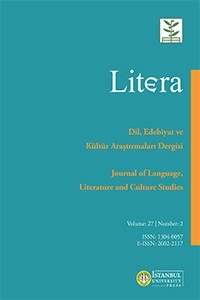Decision Making in Translation: Translator’s Strategies and Decision Models for Rich Points in Titles
Recent developments regarding translation competence have led to the acknowledgement of the strategic role of decision making in the translation process. Researchers in different science fields have always seen problem-solving as an intrinsic part of any cognitive activity. The specific character of translation decision making is a challenging area of research which is primarily associated with the essence of the translation problem and strategies to solve it. The paper addresses translation decision strategies with the aim of classifying them and proposing clusters of translation decision models for problematic text elements collectively called Rich Points. The classification was verified on a corpus of 160 newspaper titles of articles published between July and August 2020 and translated into Russian. The correlation between the source text and target text (TT) Rich Point patterns afforded ground for proposing a set of translation decision models. Quantitative assessment of Rich Points frequency revealed a tendency to eliminate them in the TT. However, translation decision strategies and assessment of models productivity rate revealed it was due to the translators’ loyalty towards factual information. The results suggest that although translation problems involve meaning disintegration, they can demonstrate pattern-like nature, and pattern recognition seems to form the core of translation decision strategies and models.
Keywords:
Translation decision, Rich Point, title, translation decision strategy pattern recognition,
___
- Beeby, A., Fernandez, M., Fox, O., Albir, A., Kozlova, I., Kuznik, A., Neunzig W., Rodnguez, P., Romero, L., Wimmer, S. google scholar
- (2009). Results of the validation of the PACTE translation competence model: Acceptability and decision making. Across Languages and Cultures, 10(2), 207-230. google scholar
- Bogdanova K. V. (2018) Ways of conveying the properties of intertextual insertions when translating from English into Russian (based on the titles of episodes from English-language animated television series). Vestnik of Saint Petersburg University. Language and Literatüre, 15(3) 412-423. https://doi.org/10.21638/ spbu09.2018.307 (In Russian) google scholar
- Burke, T. (1994). Dewey’s new logic: A reply to Russell. University of Chicago Press. google scholar
- Danks J. H. (1995): The psycholinguistics of reading and translation. In A. Neubert, G. Shreve, & K. Gommlich (Eds.), Basic Issues in Translation Studies (pp. 101-112). Kent, OH: Institute for Applied Linguistics. google scholar
- Dewey, J. (1938). Experience and education. New York: Macmillan. google scholar
- Duda, R. O., Hart, P. E., & Stork, D. G. (2012). Pattern classification. John Wiley & Sons. google scholar
- Farghal, M., Bazzi, H. (2017) Translation of English fiction titles into Arabic. The International Journal for Translation & Interpreting Research, Vol. 9 No 2. DOI: 10.12807/ti.109202.2017.a08 google scholar
- Guttinger, F. (1963). Zielsprache. Theorie und Technik des Obersetzens. Zürich. google scholar
- Isaksen, S. G., & Treffinger, D. J. (2004). Celebrating 50 years of reflective practice: Versions of creative problem solving. The Journal of Creative Behavior, 38(2), 75-101. google scholar
- Kade, O. (1968). Zufall und GesetzmaBigkeit in der Übersetzung (Vol. 1). Verlag Enzyklopadie. Leipzig google scholar
- Kazakova O.V. (2006). Osobennosti hudozhestvennogo perevoda [Translation: Specific Character of Literary Translation], Fenix publ., Rostov-on-Don. google scholar
- Latyshev, L.K., Semyenov A.L. (2003) Perevod: teoriya, praktika i metodika prepodavaniya [Translation: theory, practice and teaching methods]. Academia Publ. Moscow. google scholar
- Mason, J., Burton, L., & Stacey, K. (2010). Thinking mathematically. Pearson Higher Ed. google scholar
- Minyar-Beloruchev, R.K. (1999) Kak stat’ perevodchikom [How you become a translator]. Gotika Publ. Moscow. google scholar
- Munoz R. (1995). Lingüfstica para Traducir, Barcelona, Teide. google scholar
- Nida, E. A. (2004). Principles of Correspondence. In L. Venuti (Ed.), The Translation Studies Reader. Routledge. google scholar
- Nord C. (1995) Text-Functions in Translation: Titles and Headings as a Case in Point. Target. International Journal of Translation Studies, 7(2), 261 - 284. DOI: https://doi.org/10.1075/target.7.2.05nor google scholar
- PACTE. (2002). Exploratory Tests in a Study of Translation Competence. Conference Interpretation and Translation, 4(2), 41-69. google scholar
- PACTE. (2005). Investigating Translation Competence: Conceptual and Methodological Issues. Meta, 50(2), 609619. google scholar
- Padilla, P., Bajo, M. T., & Padilla, F. (1999). Proposal for a cognitive theory of translation and interpreting. Edizioni Universita di Trieste. URL: https://www.openstarts.units.it/bitstream/10077/2213/1/04Padilla.pdf google scholar
- Passmore, T. (2007). Polya’s legacy: fully forgotten or getting a new perspective in theory and practice? Australian Senior Mathematics Journal, 21(2), 44-53. google scholar
- Polya, G. (1957). How To Solve It: A new aspect of mathematical method. Princeton university press, 2014 google scholar
- Reiss, K. (2004) Type, kind and individuality of text: decision making in translation. In L.Venuti (Ed.), The Translation Studies Reader. Routledge. google scholar
- Rosa, A. A. (2012). Translating place: linguistic variation in translation. Word and Text, A Journal of Literary Studies and Linguistics, 2(02), 75-97. google scholar
- Soler V. (2007) Writing titles in science: An exploratory study English for Specific Purposes 26 90-102 google scholar
- Tijus Ch. (1997). “Understanding for interpreting, interpreting for understanding.” In Y. Gambier, D. Gile & Ch. google scholar
- Taylor (Eds.). Conference Interpreting: Current Trends in Research (pp. 29-48). Amsterdam-Philadelphia, John Benjamins. google scholar
- Toury, G. (1980). In search of a theory of translation. Porter Institute for Poetics and Semiotics, Tel Aviv University. google scholar
- Wilss,W. (1982). The science of translation problems and methods. Turbinge: Gunter Narr. google scholar
- Wilss, W. (1994). A framework for decision-making in translation. Target. International Journal of Translation Studies, 6(2), 131-150. google scholar
- Wallas, G. (1926). The art of thought. NY, USA: Harcourt Brace. google scholar
- Başlangıç: 1954
- Yayıncı: İstanbul Üniversitesi
